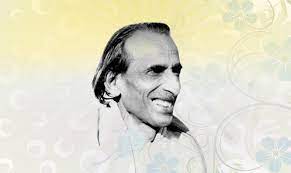Today’s Current Affairs: 14th Nov 2023 for UPSC IAS exams, State PSC exams, SSC CGL, State SSC, RRB, Railways, Banking Exam & IBPS, etc
Table of Contents
Baler Machine:

With the problem of farm fires being taken up by the Supreme Court, Belar, a machine that facilitates ex-situ (off-site) stubble management has been in demand in Punjab and adjacent regions.
- Baler machines have been around for a decade, and currently around 2,000 of them operate in Punjab.
- Of these 1,268 are highly subsidised (50-80%) under the Centre’s Crop Residue Management (CRM) scheme.
- Balers play a pivotal role in stubble compression, acting as hydraulic presses to compact crop residues into dense, manageable packages.
- These compressed stubbles are securely bound using twine, wire, or strapping.
- Before using a baler machine, farmers cut the crop residue with a tractor-mounted cutter.
- A tractor-mounted baler machine compresses the stubble into compact bales using netting.
Bioeconomy Report 2022:

India aims to increase the Bioeconomy’s contribution to GDP (Gross Domestic Product) from 2.6% to 5% by 2030, as outlined in the ‘Bioeconomy Report 2022’ by the Department of Biotechnology (DBT).
- Biotechnology funding in India remains stagnant, with only a 0.0001% allocation of the GDP.
- Despite a temporary increase during Covid-19, funding levels haven’t returned to pre-pandemic standards.
- The ‘Guidelines for Genetically Engineered (GE) Insects’, issued by the DBT in April 2023, provide procedural roadmaps for those interested in creating GE insects but have issues.
Highlights of the Bioeconomy Report 2022:
- India’s bioeconomy is on a robust growth trajectory, projected to reach USD 150 billion by 2025 and surpass USD 300 billion by 2030.
- The sector experienced a remarkable 14.1% increase, reaching USD 80 billion in 2021 compared to USD 70.2 billion in 2020.
- Daily, the bioeconomy generated USD 219 million, reflecting its significant economic impact.
- In 2021, the sector witnessed the establishment of three biotech startups daily, totaling 1,128 for the year.
- With over USD 1 billion invested in research and development, the industry is demonstrating a commitment to innovation and advancement.
- Amidst the global pandemic, India administered 4 million Covid-19 vaccine doses and conducted 3 million tests daily, showcasing its resilience and capacity.
- Over the past decade, the number of biotech startups has soared from 50 to over 5,300, with expectations of doubling by 2025.
- The Biotechnology Industry Research Assistance Council (BIRAC) has played a pivotal role by establishing 74 bio-incubation centers across 21 states/UTs, fostering a supportive environment for bio-entrepreneurs.
- Notably, India boasts the second-highest number of USFDA (United States Food and Drug Administration)-approved manufacturing plants outside the US, underscoring its global standing in the biotech industry.
6th Session Of India-Ethiopia Joint Trade Committee:

The 6th Session of the India-Ethiopia Joint Trade Committee (JTC) recently concluded in Addis Ababa, Ethiopia, bringing together officials from both countries to strengthen economic ties.
Key Highlights of the JTC meeting:
- India invited Ethiopia to collaborate on integrating the Unified Payment Interface (UPI) with Ethiopia’s Ethswitch.
- Ethswitch is a payment platform infrastructure in Ethiopia.
- India urged Ethiopia to explore settling trade transactions in the local currency for enhanced bilateral trade and conservation of foreign exchange.
- Health and pharmaceuticals, automobiles, textiles, infrastructure projects, food, and agro-processing are identified as key sectors for mutual investments.
- Both sides also reviewed the progress of ongoing discussions for Memorandum of Understanding (MoUs) in the field of Standardization and quality assurance and Customs procedure and agreed to conclude them expeditiously.
Saturn’s Rings : Study

Saturn’s rings will briefly disappear from view in 2025 due to an optical illusion caused by the planet’s tilt (which happens every 13 to 15 years), and the alignment of its rings with Earth’s line of sight.
- The rings will gradually reappear as Saturn continues to revolve around the Sun.
- According to NASA, Saturn is expected to lose its rings completely in the next 300 million years due to the gravitational pull of the planet and its magnetic field.
- The phenomenon of “ring rain” causes ice particles from the rings to be pulled into the planet by its gravity under the influence of Saturn’s magnetic field.
- Saturn is the 6th planet from the Sun and 2nd largest in the solar system
- It is Composed mostly of hydrogen and helium
- It has Spectacular and complex rings made of ice, rock, and dust
- It has 146 moons, including Enceladus and Titan
- It has Shortest day in the solar system (10.7 hours)
- One orbit around the Sun takes about 29.4 Earth years
Acharya JB Kripalani Birth Anniversary:

The Prime Minister of India has paid tributes to Acharya Jivatram Bhagwandas(JB) Kripalani on his birth anniversary (11th November 1888 in Hyderabad, Sindh).
- He Joined Gandhi’s cause in 1917, associated with the Non-Cooperation Movement, Civil Disobedience Movement, and Quit India Movement.
- J.B. Kripalani was the president of the Indian National Congress(INC) in 1947.
- He was one of the founders of the Kisan Mazdoor Praja Party (KMPP) after the independence leaving INC.
- He moved the first-ever No confidence motion in Lok Sabha in 1963, immediately after the India-China War (1962).
- He is the author of several books, including “Gandhi: His Life and Thought” (1970). The autobiography titled “My Times” was published posthumously in 2004.
Digital Advertisement Policy, 2023:

The Ministry of Information and Broadcasting has sanctioned the “Digital Advertisement Policy, 2023,” which aims to expand the government’s outreach through digital media channels.
Key Highlights:
- With increasing internet users and telecom subscribers, the policy responds to the shift in media consumption towards digital platforms.
- The policy enables the Central Bureau of Communication (CBC) to employ digital advertising for government initiatives, using digital media’s wide reach to efficiently convey citizen-centric messages.
- CBC will leverage digital audio platforms, Over-the-Top (OTT) services, video on demand, mobile apps, and social media for government advertising.
- The policy introduces competitive bidding for rate discovery, ensuring fair pricing and efficiency.
- Aligning with the current social media presence of various government departments, this policy amplifies the outreach of government schemes and initiatives through CBC’s extensive advertisement dissemination.
- The policy acknowledges the dynamic nature of the digital landscape and incorporates provisions to embrace new technologies and platforms
Cell Broadcast Alert System (CBAS):

The National Disaster Management Authority’s (NDMA) Cell Broadcast Alert System (CBAS) and Google’s early earthquake warning system did not effectively reach people during recent seismic events in Delhi and surrounding areas.
- CBAS, tested by the NDMA, failed to send alerts in North India, raising concerns about the effectiveness of these early alert systems during seismic events.
- NDMA’s seismo.gov.in website crashed during the tremors, hindering access to crucial information.
- Google’s Android Earthquake Early Warning system sent alerts in regions near the India-Nepal border where shaking was stronger, the tremors in Delhi did not trigger alerts due to their lower intensity
- NDMA’s Cell Broadcast Alert System is a cutting-edge technology enabling the government to send urgent disaster management messages to all mobile devices within a specific geographic area.
- Developed by C-DOT under the Department of Telecommunication, it is designed to deliver critical alerts for severe weather warnings, public safety messages, evacuation notices, and other emergency information.
- The system was recently tested in collaboration with the Department of Telecommunications, with sample alerts labelled as “SAMPLE TESTING MESSAGE.”
- National Disaster Management Authority (NDMA) (founded 2005; HQ: New Delhi) is an apex body mandated to lay down policies for disaster management.
- It was established through the Disaster Management Act 2005.
- It is headed by the Prime Minister.
Uttarkashi Tunnel Collapse:

Union Territories (UTs) and cities in Northeastern states find themselves in the lower ranks of the Smart Cities Mission progress.
- According to data from the Housing and Urban Affairs Ministry as of November 3, approximately 22% of total projects (1,745 out of 7,947) are still ongoing.
- These ongoing projects account for 33% of the total cost (Rs 57,028 crore out of Rs 1.70 lakh crore).
- The majority of projects, numbering 6,202, have been successfully completed.
- Data from November 10 highlights Surat (Gujarat) as the top-performing city in terms of project completion, fund utilization, and other criteria within the Smart Cities Mission.
- It is followed by Agra (UP), Ahmedabad (Gujarat), Varanasi (UP), and Bhopal (MP) in the top five.
- Other cities in the top 10 include Tumakuru (Karnataka), Udaipur (Rajasthan), Madurai (TN), Kota (Rajasthan), and Shivamogga (Karnataka).
PM-PVTG Development Mission:

Prime Minister Narendra Modi is set to launch the PM-PVTG Development Mission, a significant scheme aimed at the comprehensive development of approximately 28 lakh people from Particularly Vulnerable Tribal Groups (PVTGs).
- This event is scheduled to take place on November 15, coinciding with the birth anniversary of the renowned tribal freedom fighter Birsa Munda.
- This day has been celebrated as “Janjatiya Gaurav Diwas” for the past three years.
- In addition to the PM-PVTG mission, Prime Minister Modi is expected to launch the “Viksit Bharat Sankalp Yatra” from Khunti.
- This yatra aims to achieve the saturation of flagship government schemes across the entire country.
- The journey will commence from tribal-dominated districts, with the goal of covering all districts by January 2024.
- Prime Minister Modi’s visit to Jharkhand on November 14 and 15 will encompass the release of the 15th installment of the PM-KISAN scheme and the inauguration and foundation stone laying for projects worth ₹7,200 crore across various sectors, including rail, road, education, coal, petroleum, and natural gas




